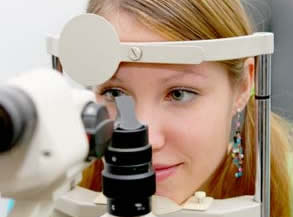Cornea Surgery

Dr. Joel Geffin of The Eye Care Group specializes in advanced medical and surgical management of all conditions and disorders of the cornea – the transparent layer of tissue that covers the front of the eye. A corneal transplant procedure is performed when the cornea of the eye becomes cloudy or irregularly shaped due to eye disease. The diseased cornea is then replaced with a healthy one donated from a local eye bank.
 A corneal transplant, which replaces damaged tissue on the eye’s clear surface, also is referred to as a corneal transplant, keratoplasty, penetrating keratoplasty (PK) or corneal graft. A graft replaces central corneal tissue, damaged due to disease or eye injury, with healthy corneal tissue donated from a local eye bank. An unhealthy cornea affects your vision by scattering or distorting light and causing glare and blurred vision. A cornea transplant may be necessary to restore your functional vision.
A corneal transplant, which replaces damaged tissue on the eye’s clear surface, also is referred to as a corneal transplant, keratoplasty, penetrating keratoplasty (PK) or corneal graft. A graft replaces central corneal tissue, damaged due to disease or eye injury, with healthy corneal tissue donated from a local eye bank. An unhealthy cornea affects your vision by scattering or distorting light and causing glare and blurred vision. A cornea transplant may be necessary to restore your functional vision.
Corneal transplants are performed routinely. In fact, of all tissues transplants, the most successful is a corneal transplant. More than 40,000 cornea transplants are performed in the United States each year, according to the Eye Bank Association of America 2008 Statistical Report.
While most people undergoing a cornea transplant can expect a good outcome, graft rejection can occur. However, medical management of graft rejection often can lead to healthy graft survival.
One of the latest advances in eye care for the treatment of corneal disease is phototherapeutic keratectomy, or PTK, as it is commonly known.
With the precision of the laser used in LASIK surgery with the control of a computer, Dr. Joel Geffin can vaporize microscopically thin layers of diseased corneal tissue. New tissue can then grow over the now smooth surface, and recovery from PTK takes a matter of days rather than months as with a transplant. The return of vision can occur rapidly, especially if the cause of the problem is confined to the top layer of the cornea.erica 2008 Statistical Report.
Are You a Cornea Transplant Candidate?
A corneal transplant may be suggested by your eye doctor for reasons varying from diseases to eye injuries, which can include the following:
- Scarring from infections, such as eye herpes or fungal keratitis.
- Eye diseases such as keratoconus.
- Hereditary factors or corneal failure from previous surgeries.
- Thinning of the cornea and irregular shape (such as with keratoconus).
- Complications from LASIK.
- Chemical burns on the cornea or damage from an eye injury.
- Excessive swelling (edema) on the cornea.
Cornea Transplant Procedure
Once you and Dr. Joel Geffin have decided that a corneal transplant is the best option to restore your functional vision, your name is placed on a list at a local eye bank. The waiting period for a donor eye is generally one to two weeks due to a very sophisticated eye bank system in the United States.
